Summary Overview
Managed Print Services Market Overview:
The global Managed Print Services (MPS) market is steadily expanding, driven by rising demand in major industries such as healthcare, education, finance, manufacturing, and government. This dynamic industry offers a variety of service options, ranging from fully outsourced print management to hybrid and cloud-based print solutions, all targeted at increasing efficiency and lowering operational costs. Our paper provides an in-depth investigation of procurement trends in the MPS arena, highlighting cost-cutting measures and the growing use of digital solutions to optimize print environments and enhance document management.
Key issues include controlling service installation costs, assuring scalability across remote workforces, protecting sensitive data, and integrating print solutions with larger IT ecosystems. Strategic sourcing and digital procurement platforms are increasingly important for maximizing MPS investments and staying competitive in a dynamically changing workplace. As global demand grows, organizations are using market information to make better decisions, boost efficiency, and reduce risk, establishing MPS as a critical component of agile, future-ready operations.
Market Size: The global Managed Print Services market is projected to reach USD 223.62 billion by 2035, growing at a CAGR of approximately 12.57% from 2025 to 2035.
Growth Rate: 12.57%
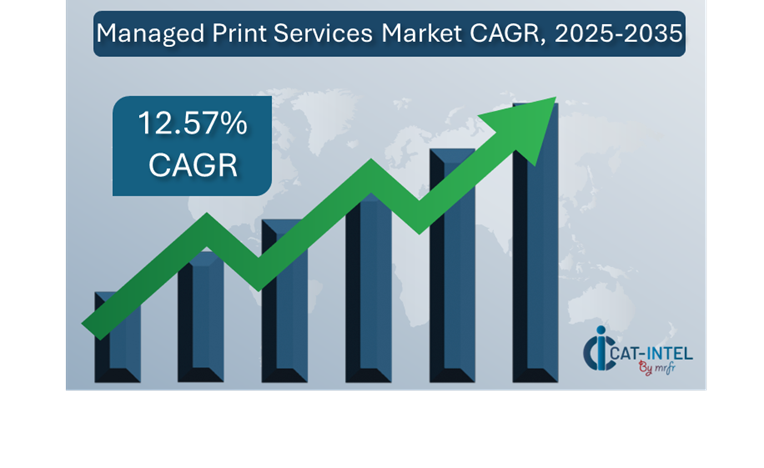
Sector Contributions: Growth in the market is driven by:
-
Manufacturing and Supply Chain Optimization: Real-time visibility and seamless process integration throughout the print environment are becoming increasingly important to decrease downtime and simplify production workflows.
-
Retail and E-Commerce Expansion: Businesses are using MPS to improve inventory documentation, manage point-of-sale print demand, and promote consumer engagement via secure, on-demand printing.
-
Technological Advancements: Artificial intelligence and machine learning are changing MPS, allowing for predictive maintenance, utilization analytics, and automated supply replenishment.
-
Modular Solutions: Customizable MPS products enable enterprises to pick exactly the services they want, reducing complexity and total cost of ownership.
-
Investment Trends: Businesses are rapidly investing in cloud-based MPS solutions to reduce the need for costly infrastructure, enable centralized management, and facilitate hybrid workplaces.
-
Regional Outlook: North America and Asia Pacific continue to lead in MPS adoption, owing to sophisticated digital ecosystems and a strong emphasis on sustainability and cost-effectiveness.
Key Trends and Sustainability Outlook:
-
Cloud Integration: Businesses are using cloud MPS for scalable, secure, and remote print management, which supports digital workplace goals.
-
Advanced Capabilities: The integration of AI, IoT, and blockchain into MPS systems improves security, optimizes device use, and enables transparent cost tracking.
-
Sustainability Focus: MPS suppliers assist enterprises reach sustainability standards with energy-efficient equipment, paper reduction initiatives, and detailed environmental impact reporting.
-
Tailored Solutions: There is increasing demand for industry-specific MPS options, particularly in industries like as education, healthcare, and legal services, where compliance and secrecy are crucial.
-
Insight-Driven Operations: MPS analytics give meaningful insights into consumption trends, cost centers, and inefficiencies, allowing for more strategic print environments.
Growth Drivers:
-
Digital Transformation: The change to digitized processes has increased need for sophisticated, integrated MPS platforms that can handle both digital and physical documentation.
-
Process Automation: Businesses use MPS to automate device management, toner replacement, and repair scheduling, which reduces human effort and print-related downtime.
-
Scalability Demands: As businesses expand or restructure, MPS enables seamless scalability, enabling for consistent print service delivery across locations and departments.
-
Compliance Management: MPS facilitates regulatory and data protection compliance by providing secure print release, audit trails, and access restrictions.
-
Global Operations: Enterprises want MPS solutions that provide multilingual assistance, uniform standards across locations, and centralized reporting to improve governance.
Overview of Market Intelligence Services for the Managed Print Services Market:
Recent research has identified issues such as high implementation costs, the complexities of integrating old infrastructure, and rising cybersecurity concerns. Market intelligence services offer extensive insights into procurement best practices, assisting firms in optimizing vendor selection, benchmarking costs, and ensuring effective implementation. These insights also help firms maintain ongoing compliance and quality management initiatives, allowing them to continually adapt, limit expenses, and meet performance goals.
Procurement Intelligence for Managed Print Services: Category Management and Strategic Sourcing
To remain competitive in the MPS market, businesses are fine-tuning their procurement strategies through sophisticated expenditure analysis, supplier benchmarking, and performance monitoring. Effective category management and smart sourcing save costs, eliminate service interruptions, and assure access to innovative MPS solutions. Using real-time market intelligence, organizations may negotiate better contract terms, strengthen supplier relationships, and connect MPS investments with overall operational and sustainability objectives.
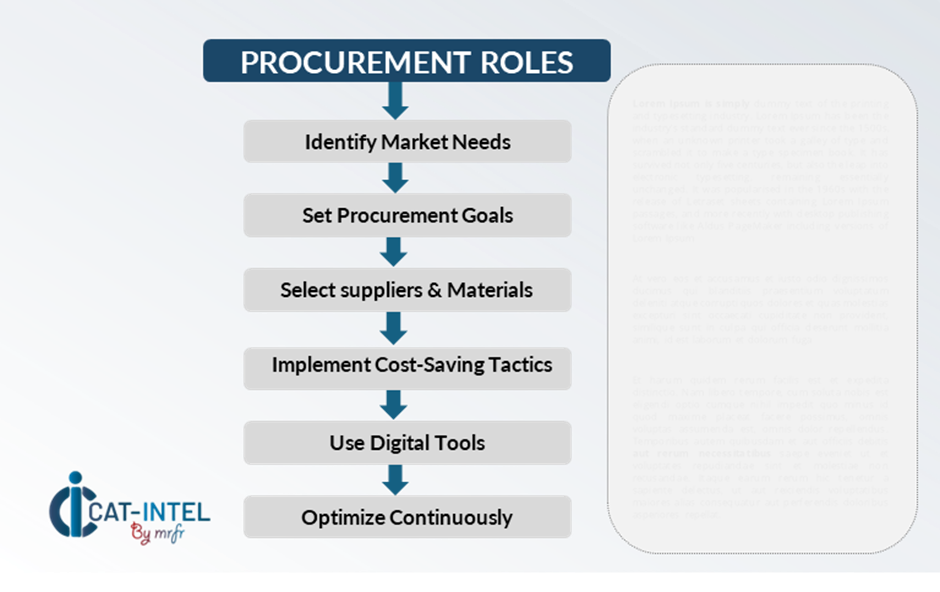
Pricing Outlook for Managed Print Services: Spend Analysis
The pricing environment for Managed Print Services is projected to remain somewhat volatile, affected by a few critical variables. These include technology developments, rising demand for cloud-managed print environments, increased customisation requirements, and pricing differences in regional service delivery. The integration of AI and IoT capabilities, along with a rising emphasis on data security and compliance, is increasing service complexity and putting upward pressure on MPS prices.
Graph shows general upward trend pricing for Managed Print Services and growing demand. However, there may be fluctuations influenced by economic conditions, technological advancements, and competitive dynamic.
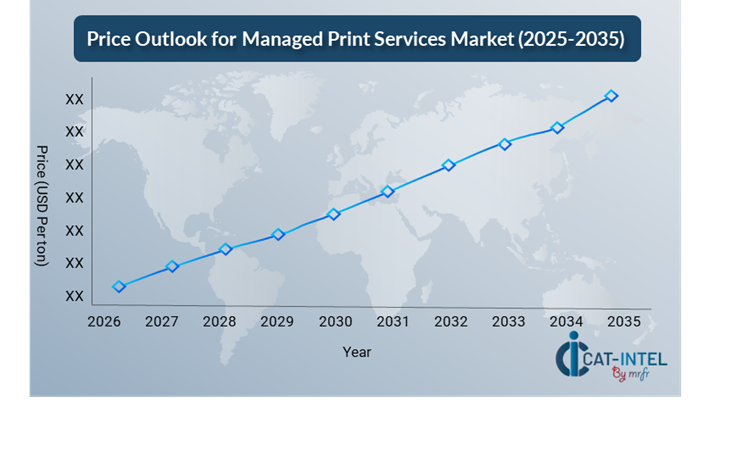
To successfully reduce costs, firms focus on refining procurement processes and improving vendor performance tracking, maintaining budget management requires the use of digital procurement technologies, continuous market pricing monitoring, and price forecasting analytics. Effective contract administration, particularly for service-level agreements, (SLAs)—also plays a vital role in ensuring value delivery.
To manage MPS spending strategically, successful firms engage with dependable, future-ready MPS suppliers and negotiate multi-year service agreements to ensure pricing consistency. Regardless of pricing fluctuation, concentrating on scalability, enabling seamless adoption, and shifting to cloud-enabled print services will be crucial to achieving long-term cost savings and operational excellence.
Cost Breakdown for Managed Print Services: Total Cost of Ownership (TCO) and Cost-Saving Opportunities
- Hardware Cost: (35%)
-
Description: Hardware expenditures include the initial investment in printers, multifunction devices (MFDs), and accessories like scanners and fax machines. It also covers fees for equipment leasing, maintenance, and repair.
-
Trend: Cloud-based printers and managed multifunction devices (MFDs) are becoming increasingly popular due to their cheaper startup costs and scalability.
- Consumables Cost: (XX%)
- Service and Maintenance: (XX%)
- Administrative and Management: (XX%)
Cost-Saving Opportunities: Negotiation Levers and Purchasing Negotiation Strategies
In the changing MPS landscape, simplifying procurement processes and implementing efficient negotiating tactics can result in significant cost savings and increased operational efficiency. Long-term agreements with MPS providers, particularly those providing cloud-managed and scalable solutions, can result in more attractive pricing structures, such as volume-based discounts, bundled service packages, and tailored SLAs. Subscription-based and multi-year agreements provide cost stability while also protecting companies from escalating service charges, making them an appealing option for forward-thinking firms.
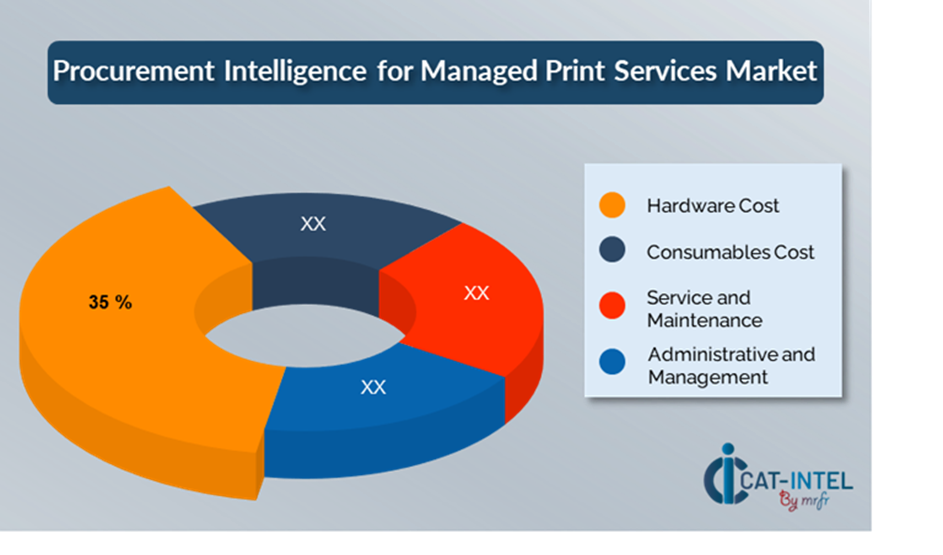
Collaborating with MPS providers who prioritize innovation, security, and scalability provides long-term benefit through access to sophisticated analytics dashboards. Digital procurement platforms, contract lifecycle management systems, and real-time use analytics improve transparency, eliminate overprovisioning, and guarantee that every print asset is fully utilized. Organizations can secure long-term value, minimize total cost of ownership, and ensure print infrastructure supports larger business objectives by aligning MPS procurement with digital transformation goals and concentrating on flexible, data-driven service models.

Supply and Demand Overview for Managed Print Services: Demand-Supply Dynamics and Buyer Intelligence for Effective Supplier Relationship Management (SRM)
The Managed Print Services market is growing steadily, driven by rising digital transformation in industries such as healthcare, manufacturing, finance, and education. Technological innovation, industry-specific demands, and overall economic conditions all have an impact on how supply and demand interact.
Demand Factors:
-
Digital Workplace Initiatives: Organizations are emphasizing digital processes and secure document management, increasing demand for MPS solutions that minimize paper consumption and support hybrid workplaces.
-
Cloud-Based Print Management: Businesses are increasingly turning to cloud-native MPS technologies, which provide scalable, subscription-based models with remote monitoring, analytics, and centralized management.
-
Sector-Specific Compliance: Industries such as healthcare and legal services demand highly secure and compliant MPS solutions to fulfill severe data security and audit trail requirements.
-
System Integration Needs: There is a growing need for MPS that connects smoothly with IT ecosystems like as document management systems, mobile printing apps, and IoT-enabled devices.
Supply Factors:
-
Technology Innovation: Advancements in AI, predictive analytics, IoT, and secure cloud infrastructure are improving MPS offerings, allowing suppliers to provide smarter, more affordable solutions.
-
Diverse Vendor Landscape: The MPS provider ecosystem is expanding, with a mix of big global organizations and specialist vendors providing personalized solutions, giving customers additional options and flexibility.
-
Global Economic Influence: Currency changes, labor costs, and regional digital preparedness all have an influence on global pricing, service availability, and deployment patterns.
-
Modular and Scalable Solutions: Vendors provide modular MPS systems that can grow with company demands, whether for small offices or multinational companies, and support a wide range of device kinds, use quantities, and print rules.
Regional Demand-Supply Outlook: Managed Print Services
The Image shows growing demand for Managed Print Services in both North America and Asia Pacific, with potential price increases and increased Competition.
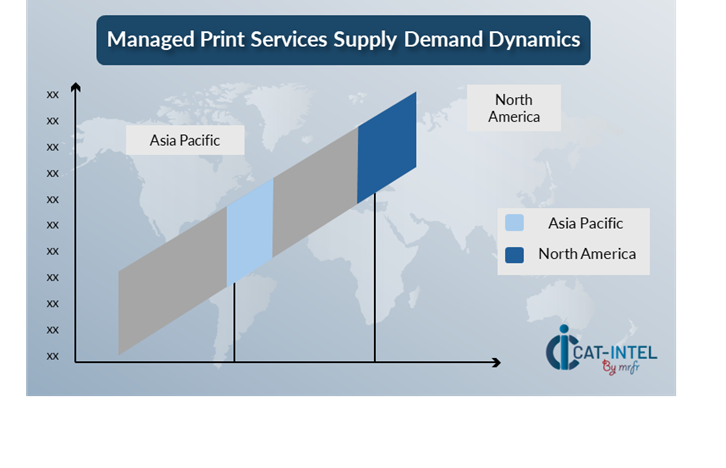
North America: Dominance in the Managed Print Services Market
North America, particularly the United States, is a dominant force in the global Managed Print Services market due to several key factors:
-
High Adoption of Digital Workplace Solutions: North American firms are pioneers in digital transformation and hybrid work patterns, resulting in increased demand for cloud-based MPS systems, secure mobile printing, and remote fleet management.
-
Advanced IT Infrastructure and Connectivity: North America provides a perfect setting for IoT-enabled devices, AI-powered print analytics, and cloud-managed print ecosystems, offering MPS providers a competitive advantage in innovation and deployment speed.
-
Strong Global MPS Vendor Presence: North America is home to the headquarters and regional offices of the world's largest MPS suppliers. and expanded customer support networks around the area.
-
Prioritize Cost Efficiency and Sustainability: MPS solutions that enable print optimization, energy-efficient device utilization, and paper waste reduction are closely aligned with the region's corporate goals, increasing adoption.
-
Robust Regulatory and Security Requirements: In the United States and Canada, industries such as banking, healthcare, and legal confront stringent compliance regulations, and data protection features are vital to achieving these expectations, hence driving regional market growth.
North America Remains a key hub Managed Print Services Price Drivers Innovation and Growth.

Supplier Landscape: Supplier Negotiations and Strategies
The MPS supplier ecosystem is broad and competitive, with global market leaders and regional experts shaping the industry's development. These suppliers have a significant impact on price structures, service delivery standards, and solution customisation. Established multinational corporations dominate the industry, providing end-to-end print management solutions such as device fleet optimization, secure printing, and analytics. Along with them, nimble niche providers are gaining market share by providing industry-specific offers, new cloud-based services, and cutting-edge features like predictive maintenance and AI-powered analytics.
Local and regional businesses provide deep subject experience, fast deployment, and customisation to specialized areas such as healthcare, education, and government. The changing MPS landscape benefits suppliers who are nimble, scalable, and innovation driven. Providers who provide security-first, analytics-rich, and flexible solutions are well positioned to gain a competitive advantage as businesses look to upgrade their print environments without sacrificing cost, compliance, or control.
Key Suppliers in the Managed Print Services Market Include:
- Xerox Corporation
- HP Incorporated
- Canon Solutions America
- Ricoh Co., Ltd
- Konica Minolta Inc
- Lexmark International Inc
- Toshiba Corporation
- Epson America, Inc
- Sharp Electronics Corp
- Samsung Electronics Co., Limited.
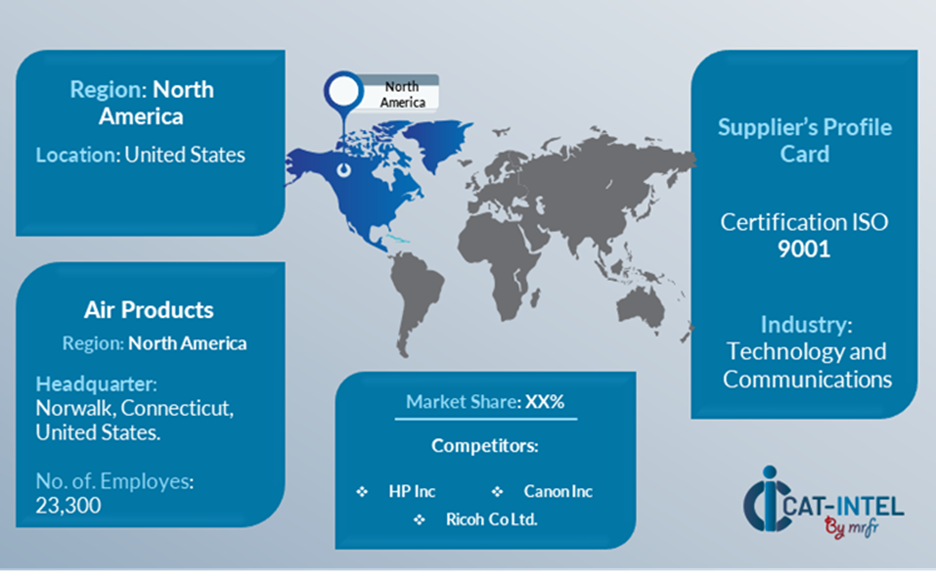
Key Developments Procurement Category Significant Development:
Significant Development |
Description |
Market Growth |
The MPS industry is rapidly expanding as businesses strive to cut printing costs, improve document security, and enable hybrid work environments. This tendency is particularly prominent in emerging economies that have adopted digital workplace techniques. |
Cloud Adoption |
A major move to cloud-managed print services is occurring, driven by the need for remote access, centralized control, and scalable infrastructure in hybrid and decentralized organizations. |
Product Innovation |
MPS providers are using AI-powered analytics, secure mobile printing, and industry-specific features particularly for healthcare, legal, and education to give more personalized and intelligent solutions. |
Technological Advancements |
The use of IoT-enabled devices, predictive maintenance technologies, and machine learning algorithms is changing MPS from a cost center to a source of relevant business insight. |
Global Trade Dynamics |
Evolving data privacy requirements, cross-border compliance, and trade policies shape MPS deployment strategy, notably for multinational organizations with complex document handling needs. |
Customization Trends |
There is growing need for modular, adaptable MPS solutions that interact with current IT ecosystems like as document management systems, corporate content management, and workflow automation technologies. |
Managed Print Services Attribute/Metric |
Details |
Market Sizing |
The global Managed Print Services market is projected to reach USD 223.62 billion by 2035, growing at a CAGR of approximately 12.57% from 2025 to 2035.
|
Managed Print Services Technology Adoption Rate |
Approximately 68% of organizations have deployed MPS, with a heavy emphasis on cloud-first models and data-driven fleet optimization. |
Top Managed Print Services Industry Strategies for 2025 |
Strategies include adopting AI-driven print analytics, increasing secure mobile and pull printing, improving device lifecycle management, and focusing on environmental sustainability through print reduction programs.
|
Managed Print Services Process Automation |
Approximately 60% of MPS deployments now automate supply replenishment, device maintenance, and print routing, freeing up IT workers and decreasing downtime.
|
Managed Print Services Process Challenges |
Common issues include legacy system integration, user acceptance, data security concerns, and managing multi-site installations across worldwide locations.
|
Key Suppliers |
Xerox, HP Inc., Canon, Ricoh, and Konica Minolta are among the major worldwide companies, although tiny regional vendors focusing on SMB and vertical-specific solutions provide a significant challenge.
|
Key Regions Covered |
North America, Europe, and Asia-Pacific are the leading regions for MPS adoption, which is being driven by expansion in manufacturing, education, financial services, and healthcare.
|
Market Drivers and Trends |
The demand for cost optimization, secure document handling, cloud-based print infrastructure, and environmentally responsible printing methods all drive growth. AI, IoT, and sophisticated analytics are continually reshaping the MPS environment. |








